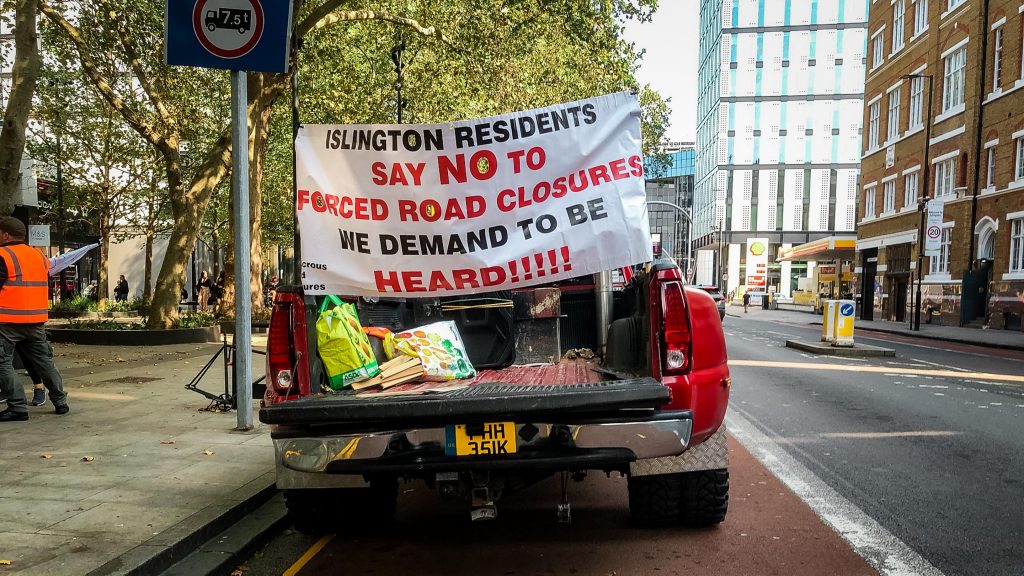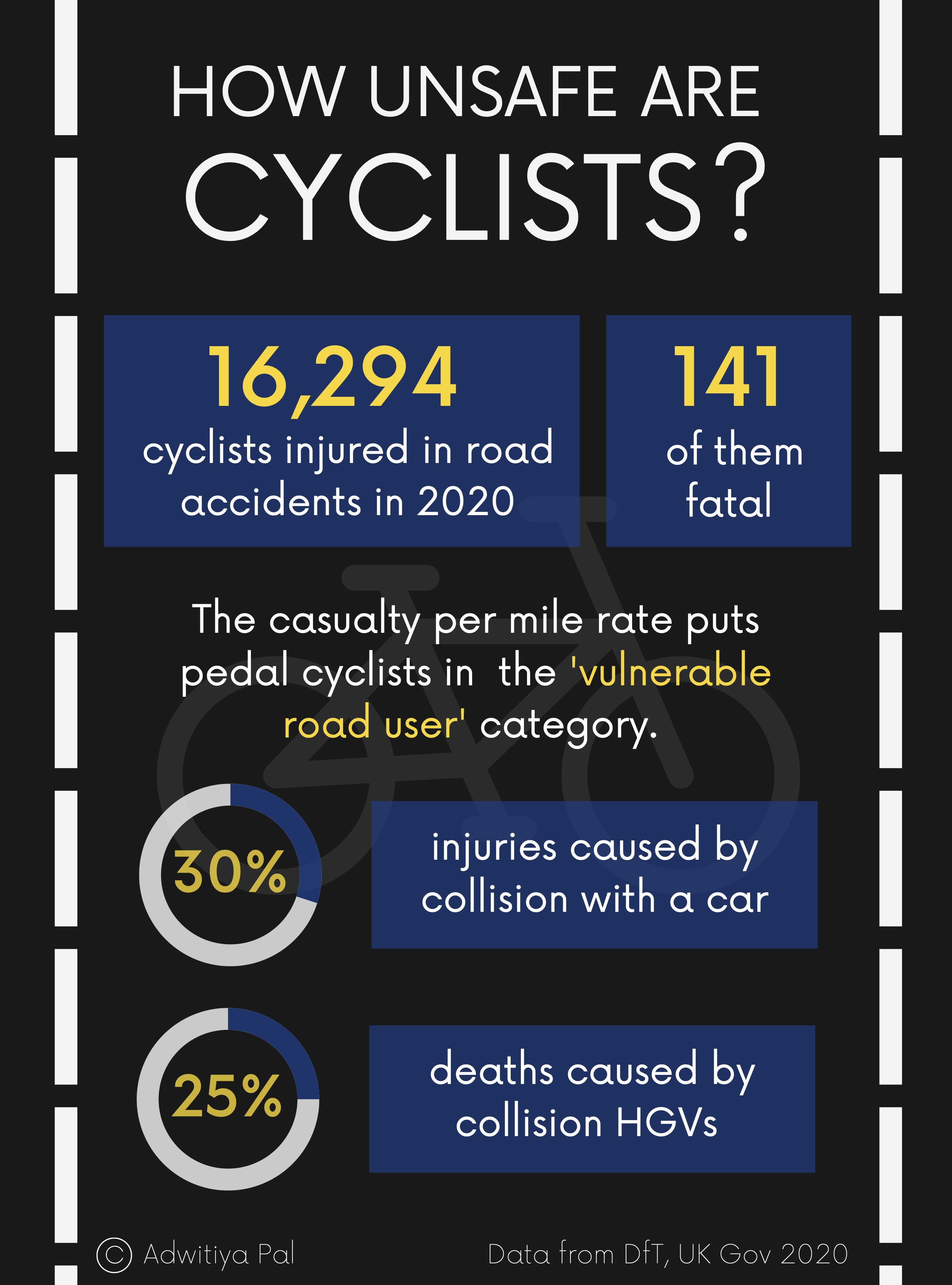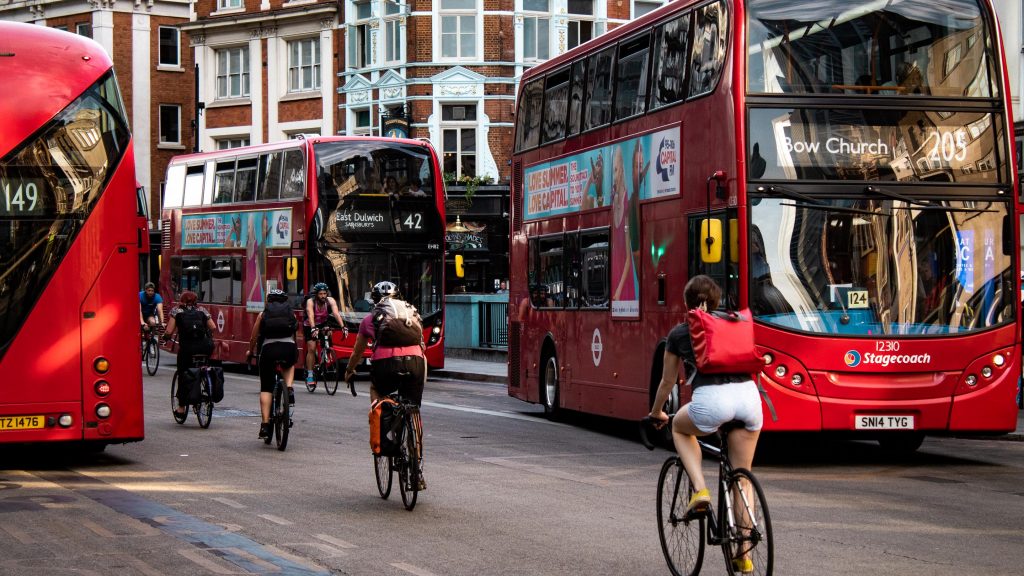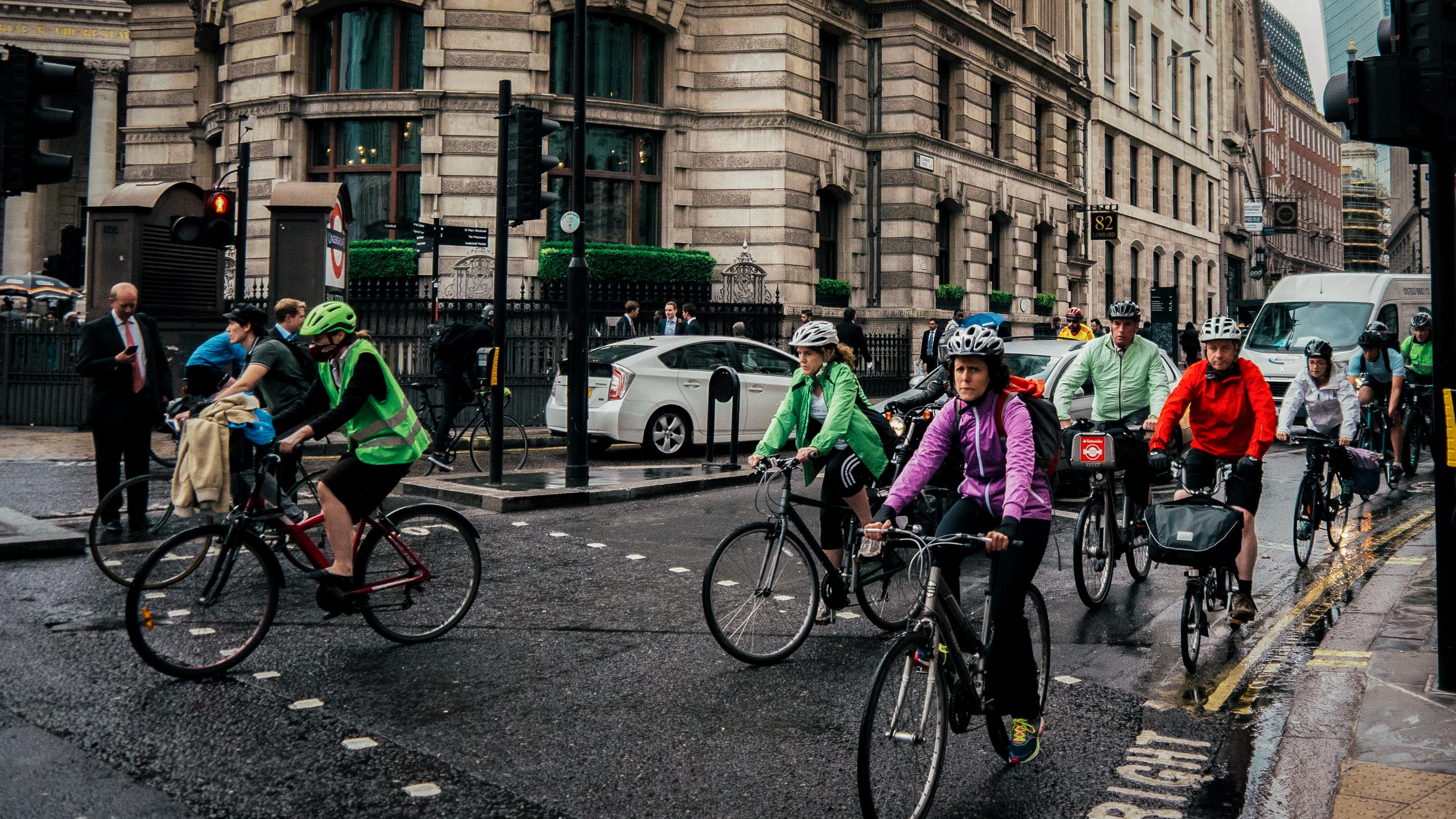Violence, vandalism and abuse — nothing is off the table as bitter fights to decide who owns the streets rages on. How is everyone, from cyclists to drivers and campaigners to politicians, having their say on it?
As Rob Richter* rode his bike to the end of the cycling corridor at Bishopsgate and hopped on to the A10 in Central London, he readied himself to manoeuvre his way through a sea of vehicles in order to get home safely.
He was riding close to the pavement and at a fairly low speed, but there was not much he could do when a van driver sped dangerously close to him, almost knocking him down. As he caught up to the van at the next intersection, the driver started ridiculing him for not being able to afford a car, and then got out and tried to pick up a fight.
This wasn’t the first time Rob, a keen cyclist from Hackney for the last 14 years, had a not-so-welcoming experience on his bike. “I’ve been shouted at, spat at, I once had a sandwich thrown at me,” he says. “Abuses and close passes are absolutely routine, but then there are more threatening and violent encounters every now and then.”

According to Rob, anyone who cycles in London has probably had a similar experience. But the lines of division between cyclists and drivers go all around the country, as the construction of bike lanes has been rapidly sped up since the pandemic. More than £250 million have been spent to build or upgrade cycle lanes in the UK since 2020, with more than 100km of them being in London alone.
However, it has left less space on the roads for cars and cabs. A study by a transport analytics firm found that the average British driver spent around 73 hours stuck in traffic in 2021. Motorcycling website Visor Down writes that with the extra width inhabited by the cycle lanes, this is only going to get worse.
The tone of the debate feels much more apocalyptic. There’s a real edge of threatened violence to some of it.
Malachi Chadwick, cyclist and climate campaigner
The backlash against these measures has been severe. In London, the Kensington Council decided to remove the pop-up bike lanes in less than two months of trial, after intense objections from motorists last year. In Liverpool, the bike lanes on Lime Street managed to stay alive for five days; in Greater Manchester, 48 hours.
Malachi Chadwick, climate activist and cyclist, appearing on a podcast about street changes recalls never having seen such a strong reaction in this debate, with people comparing these boundaries and lines to the Berlin Wall and apartheid. “The tone of it feels much more apocalyptic. There’s a real edge of threatened violence to some of it,” he says.
One of the most heated topics are the ‘low-traffic neighbourhoods’, or LTNs. These are areas shut off to through traffic with the help of filters like bollards or planters. A recurring theme with them is the filters falling under the wrath of people opposed to such schemes. There have been multiple instances of planters being vandalised or tipped over in London. In places like Lambeth and Ealing, protestors to the scheme poured black oil between the planters to sabotage cyclists.
Although councils had been testing LTNs for the last few years, their implementation was also expedited during the pandemic to promote travelling in a socially distanced way. In the first five months of lockdown, more than 200 schemes were proposed in cities like Manchester, Edinburgh and Birmingham.
The trend of vandalism against LTNs, however, is still continuing, with three such recent neighbourhoods in Oxford being the latest sites of unrest. In May, half of the planters and bollards were ripped out in less than 24 hours of their installation, with people using power tools to cut them down.
Since then, what journalist Neil Clark describes as a ‘civil war’ between the Oxford City Council and residents, has ensued. Yet most of the data suggest that a majority of people are in favour of LTNs, with almost 50% of residents of the low-traffic neighbourhoods strongly supporting them.

However, spaces like Twitter and Facebook are rampant with radical voices that call for an immediate end to these measures. When the news of the planters being smashed down was posted in an anti-LTN Oxford Facebook group in May, the moderator left a comment: “More to come hopefully, hopefully [sic] it will be the trend to how many can be knocked down or set on fire”.
In July, the provoked arson became a reality. A group of hooded men set fire to the bollards in Iffley, Oxford at night, melting them down to a black gunk of metal. Cycling campaigner Ian Pond, commenting on such incidents says, “It’s outrageous, it’s illegal and it has to be stopped.”
But he also points out where these people are coming from. “We’ve lived in a world where we’ve been taught that you need a car to get around, that the car equals success and freedom,” he says. He believes that the concept of not owning or using a car challenges the entire worldview of a lot of people, and when confronted with this societal shift, it poses an existential threat.
“It is an incredibly emotional and dividing subject,” says Ian, who also chairs the Bristol Cycling Campaign. “If you’re taking away my fundamental freedom to get around as I want to, some people will become extremely motivated to do things that they otherwise wouldn’t do.”
Cycling campaigners worry that this threat to drivers losing their exclusive right to roads has taken shape in a narrative that cyclists are encroaching their way onto roads, flouting rules and causing anarchy in a well-regulated world. Rob says that he can’t keep count of how many times he’s been told to get off the roads. “But when cyclists use the pavement, then people are furious about the risks to pedestrians, and probably rightly so. So in a sense, we can’t win,” he says.
However, Rob thinks that the media has some blame to share in the stigmatisation of cyclists. He says that while a lot of press coverage around cyclists is negative, even the ones that aren’t propagate an archetype of cyclists as smug, middle-aged, white upper-class Lycra-donning men in Hi-vis tops, leading to an alienation of a lot of the people who cycle just as a commute. “It’s an everyday activity, I don’t get dressed up to do it,” he says.
The Guardian’s political correspondent and a cyclist himself, Peter Walker, agrees to some degree. “The media is not stupid. They won’t pick on a group which is very popular,” he says. “But if things go right, that can change.”
Barely a decade ago, Peter says that the British media was rife with stories mocking vegans. “But now vegans are everywhere. So if you do a story mocking them, then chances are that the person who reads it will at least know somebody who’s a vegan, and that’s probably not going to sit too well,” he says.
“The fact that cyclists are still a fair game in the media is mainly a factor of the limited number of cyclists on the roads,” says Peter. He’s not wrong — the latest data from the National Travel Survey states only 2% of all trips in the UK are taken by bike. And while the directive from the Westminster government is that they want to promote active travel, the media makes it difficult for the local councils to act, Walker adds.

Following the vocal opposition that some of the LTNs have faced, a number of London councils have buckled. When an LTN-trial scheme was put in place in Redbridge in London, there was such a strong backlash that despite Councillor John Howard stressing that it was only a temporary measure, the planters and bollards had to go away in a month. A lot of councillors initially in support of the programme, also eventually started to distance themselves from it.
One of the reasons for the discontent that gets cited in many forums and pages is the lack of consultation between the councils and the public. However, Peter says that the councils just have to be a little braver. “Some councils get into this bind where they think that they have to get everybody on their side before they can move,” he says. “You just have to accept at least some opposition.”
It seems like some councils are trying to walk the line between being brave enough and consulting enough people. Recently, Bath’s Council announced that they will be implementing LTNs, dubbed ‘liveable neighbourhoods’, irrespective of the opposition. But they are also following an elaborate and comprehensive consultation process, with the help of active travel charity Sustrans.
Oliver Wheeler, the community engagement officer for Sustrans at Bath, says that while the Council was already setting up local workshops, a lot of regular people would not feel confident coming. “It’s only going to be the most motivated people who go to those sorts of formal workshops,” he says. Now, they’re focusing on things like youth engagement and visiting community centres, churches, and food banks to listen and involve even the most vulnerable residents.
Sustrans’ work also shows the close relationships between active travel campaigners and local governments. Rob, who’s recently started campaigning with the London Cycling Campaign, says that most of them have a ‘critical friend’ approach with the politicians, instead of being too aggressive. “We try and point out where things could improve and make sure that we thank the politicians when they do things right. It’s proved to be quite a successful approach, rather than just shouting at them,” he says.
Despite the strong and vocal retaliation, the anti-cycling consortiums have also been facing setbacks. Last year, The Licensed Taxi Drivers’ Association (LTDA) in London accused the Mayor and Transport for London of unlawfully widening pavements and restricting entry to only buses and cycles at Bishopsgate — the same corridor where Rob was cycling before being close-passed by the van.

Although they won the case in The High Court, The Appeal Court overturned the ruling stating “it would be extraordinary and not right for a court to condemn them [the measures] as extreme or ill-considered”. It’s been two years since the changes were introduced, and now TfL points out that this scheme has made pedestrians and cyclists safer, buses reliable, and reduced journey times.
Rob says that the LTDA objects to anything that excludes their access to the city, but he adds that they could stand to gain from a reduction in private vehicle ownership if they played it carefully. “They feel a bit threatened,” he says. “They’ve been so obstructive and obnoxious that they haven’t got anything out of it and just ended up losing every battle.”
But it’s not just the black cab drivers. Many anti-LTN groups also claim that they are defending the community from being divided into two — invoking the Berlin Wall straw man Malachi Chadwick was referring to. They are named with a prefix of ‘One’ in front of the borough name — OneEaling, OneWandsworth, OneIslington, for instance — and their websites have detailed guidance on how to object to LTNs, with emails and contacts of their respective councillors listed.
While on the surface, such groups seem rather harmless and simply exercising their democratic right to protest, Rob says that their agenda goes deeper. “They regularly peddle anti-cycling rhetoric and spread hateful messages towards cyclists discreetly,” he says.
Although social media has amplified the more toxic aspects of this culture war, the idea of modal filters to restrict cars, vans or lorries has existed in UK’s urban design policies since the 1960s. A recent research showed that at least 25,000 traffic filters already existed before the pandemic. Peter Walker argues that it’s a matter of time before people temper their disdain for cycling policies and come around to accepting bikes as a viable mode of transport.
“About 10-15 years back, a lot of the London councils went through the same thing when they introduced controlled parking zones, which meant that people had to pay an annual fee to park outside their houses,” says Peter. “It was chaos. People said, ‘This would never work. We never had to do anything like this.’ But now, no one really notices.”
As of now, moving away from the absolute concepts such as a driver or a cyclist may help in moving past the dispute and meet in the middle, according to Ian Pond. He says that a lot of cyclists either share or own a car, take trains and buses, and most definitely walk. “It’s silly to try to create these silos and define people by a mode of transport,” he says.
“In an ideal world, we wouldn’t need protected bike lanes or modal filters. If everyone drove sensibly or cycled sensibly, then things could happily roll along. But we’re patently not in that situation,” he says. “So separation and protection, I think, is the only way to slowly break out of this.”

*Name changed on behalf of interviewee’s request to stay anonymous
